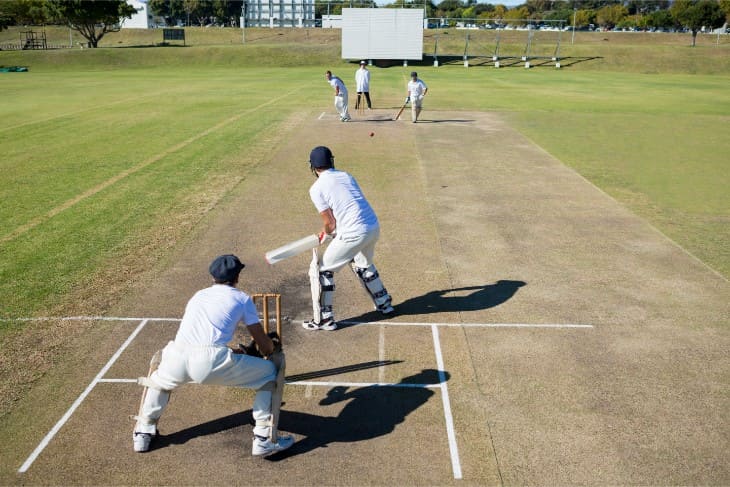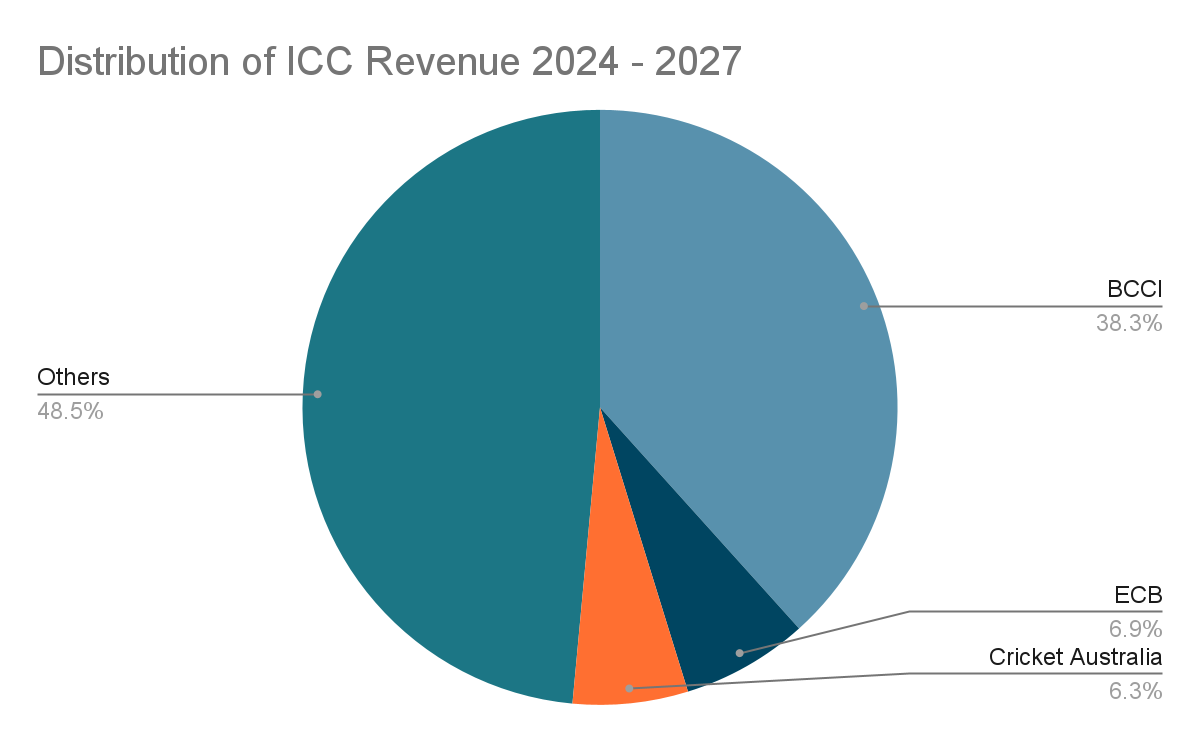An eagerly anticipated report which brought together six months of detailed analysis of cricket’s global structure was released on Wednesday by the World Cricketers Association (WCA). ‘Protecting History, Embracing Change. A Unified Coherent Global Future’ was produced in conjunction with The Sports Consultancy and used interviews from some of the world’s best players such as Jos Buttler, Pat Cummins, Rashid Khan and Heather Knight.
Plenty of problems as well as solutions and opportunities have been identified for the game, some of which are sure to whet the appetite of cricket fans across the globe.
As opposed to you reading all 31 pages of an outstanding document, we have picked out some of the key statistics, as well as highlighting where the WCA thinks cricket can improve itself in our article below.
Global Cricket Revenue Statistics
- A whopping 83% of global cricket revenue is shared between Australia, India and England
- Those three countries have won 11 of the last 13 major International Cricket Council (ICC) Events
- Just 2% of global cricket revenue is shared between the countries currently ranked 13 - 108!
- Of those who have helped to generate it, only 10.5% of global cricket revenue is shared by those same players.

Problems and Solutions
Scheduling
Any cricket fan or player has been banging on about this issue for at least the last decade due to the proliferation of new T20 tournaments across the globe. Inevitably, this has caused cross-overs into traditional domestic league calendars and international fixtures, but the new tournaments can not be blamed for launching as they all want to capitalise on the popularity and commercial opportunity of the shorter formats.
Every country wants an Indian Premier League style competition which captures the imagination of their cricket public while attracting the biggest names and largest brands as sponsors.
Just one look at the excitement, column inches and social media coverage of the first week of this year’s IPL shows just what can be achieved. However, the number of these leagues has diluted the overall quality of many products and put the future of international cricket at risk.
The WCA suggests more centralised management of international and domestic formats with an easier to follow global calendar. This should include scheduling windows for ‘Core International Cricket’ which will also provide promotion and relegation across all formats.
By doing this, international cricket and franchise leagues should stop being in competition and can instead feed off each other.
Economics
As is highlighted in the ‘Global Cricket Revenue Statistics’ section, the distribution of wealth in cricket is neither fair nor producing competitive outcomes across the board. As a result, the WCA argues that the game as a whole is shooting itself in the foot when it comes to competing against other sports or smashing its global ceiling.
With the current ICC revenue distribution resulting in Cricket Australia, the BCCI and the ECB filling their deep pockets, even the other Test playing nations are left far behind. And that’s before cricket takes a look at the emerging and associate nations who are all looking to develop the game in their respective countries.

An idea is to distribute ICC wealth with minimum and maximum parameters while a centralised Global Growth and Development Fund has been proposed to fund ‘Core International Cricket’ and other initiatives across the world.
Alongside the above, there should be player revenue sharing parameters in all ICC sanctioned cricket as well as an increase in accountability and regulation covering how any money is spent.
Regulations
In many ways, cricket is unrecognisable from the sport which was played at Test level in only seven countries during the 1980s and nine playing nations in the 1990s. Short format cricket was a relatively new phenomenon at the end of the last century but has since become the primary revenue and growth driver across the globe.
As a result, global regulations need to be brought forward to reflect the game and updated for the modern world. The current state of play sees restrictions, protections and levels of player security which are not fit for purpose.
The WCA recommends global regulations which are able to mirror the rapid growth of the game which is now played at international level in over 100 nations!
These new regulations should be developed with the modern global calendar, which includes player movement, as well as technology, at the forefront.
Leadership
Complaints from players, managers, fans, schedulers and sponsors have gone unheard for too long with many suggesting that whatever leadership is in place at the ICC is archaic and unable to provide global direction.
This gulf has led to a real imbalance of power which has unsurprisingly been reflected in regional self-interest and a lack of medium to long-term planning.
According to the WCA report, an interim ‘Global Game Leadership Committee’ needs to be implemented as a matter of urgency so it can make overall recommendations on the sport and to the ICC.
While the above committee can start to make suggestions, it is hoped that the ICC will use the opportunity to modernise and produce a shared ownership model to allow many countries to flourish rather than a select and elite few.

How should these changes benefit cricket?
- International cricket should then become something which can flourish across the world as opposed to barely surviving in the majority of cases currently.
- An easier to follow cricket calendar for fans old and new, young and old.
- Greater clarity across the cricket calendar will be seen as a positive by brands and sponsors with a forecast increase in revenue of US$240million.
- An increase of competitive cricket at international level with the equitable global growth of the game.
- Opportunities for national bodies and franchise leagues to look forward over the next 10-15 years as opposed to the current status-quo of looking for the next quick fix!
- Opportunities for players to build their own careers at home and abroad while not being forced to choose between the two as is the current predicament for many.
What will actually change?
Forget the increased forecast in revenue, the million dollar question is will the ICC actually listen with an open mind and start to make the distribution of cricket funds fairer across the world.
Australia’s captain Pat Cummins wants to see “international cricket protected and thriving in the future” while Afghanistan’s captain Rashid Khan is “urging the game’s leadership to act on the information and suggestions contained in this report”.
Former England Women’s captain Heather Knight highlights that “A unified sport is going to achieve better outcomes than a fragmented one.” but it remains to be seen what changes will come and when.
For now, the strength of Cricket Australia, the BCCI and the ECB is there for all to see. Realistically, the only shows in town over the last month and the next two have been the Women’s Premier League and now the IPL.
This summer, England will take on India in a five-Test series before the Men’s Ashes gets underway in late November in Australia.
Cricket has so much rich history, but now is the time to build future rivalries across the globe, and this report from the WCA, along with the sport being a part of the Los Angeles Olympics in 2028, may just be able to accelerate that much-needed process.




.webp)
